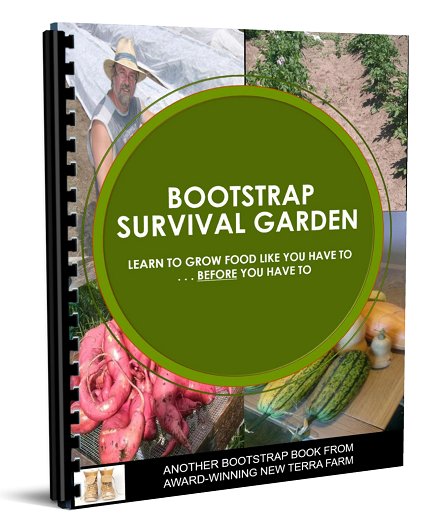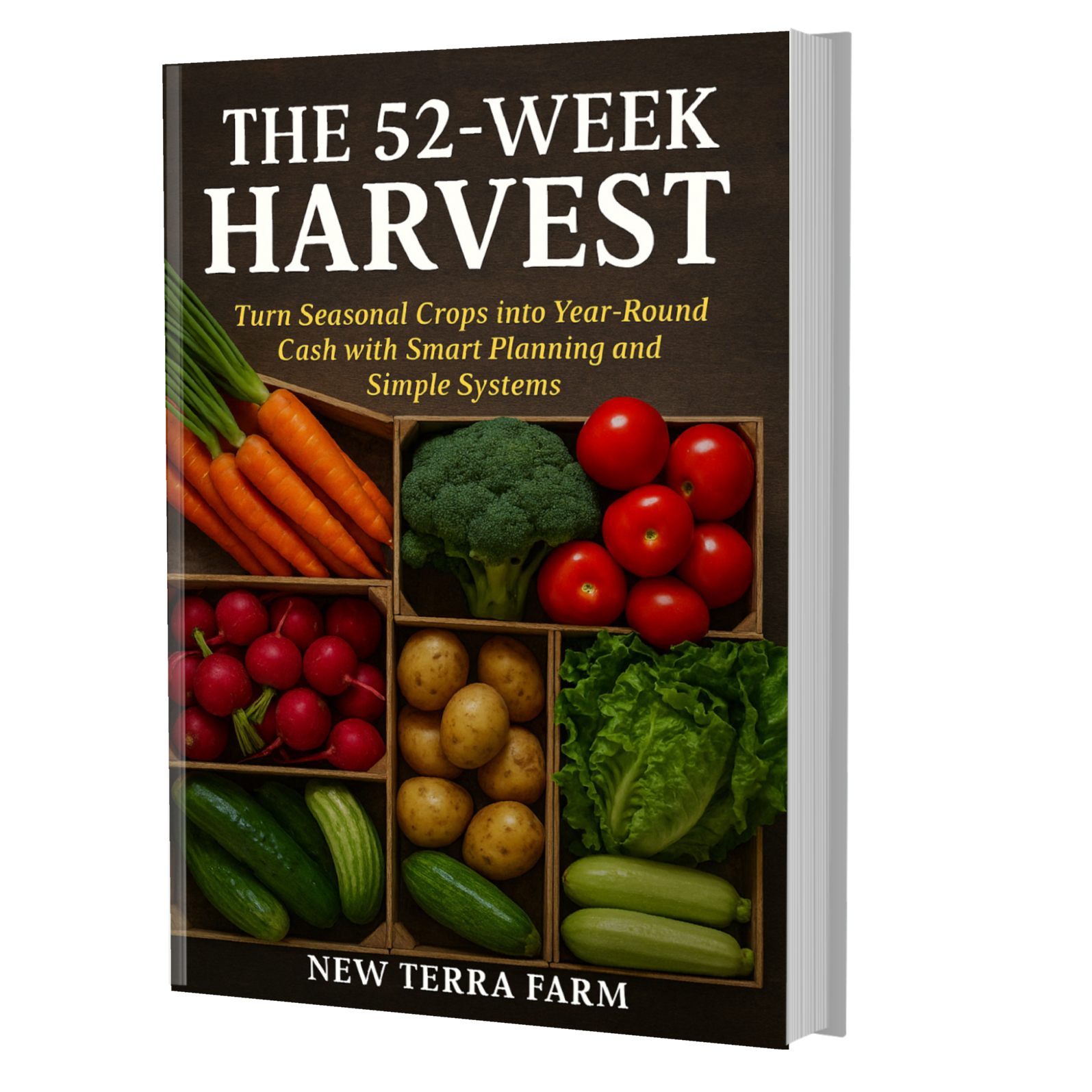The Four Season Survival GardenThe Four Season Survival Garden is part of a series of articles about how to deal with coming 'tough times', from the perspective of (what should be) our top priority - ensuring we have enough food.
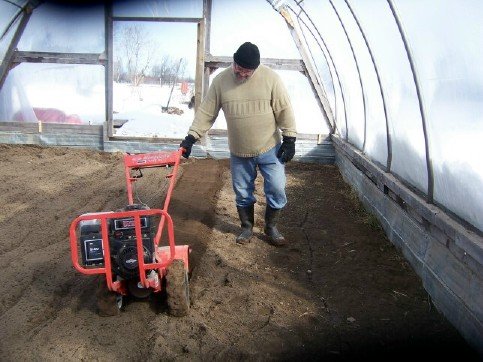 Man I love my greenhouse! Man I love my greenhouse!And a basement cold room or a root cellar captures 'free cold' in the same way a greenhouse captures free heat. This combination makes providing your own food 12 months a year a much more practical option. 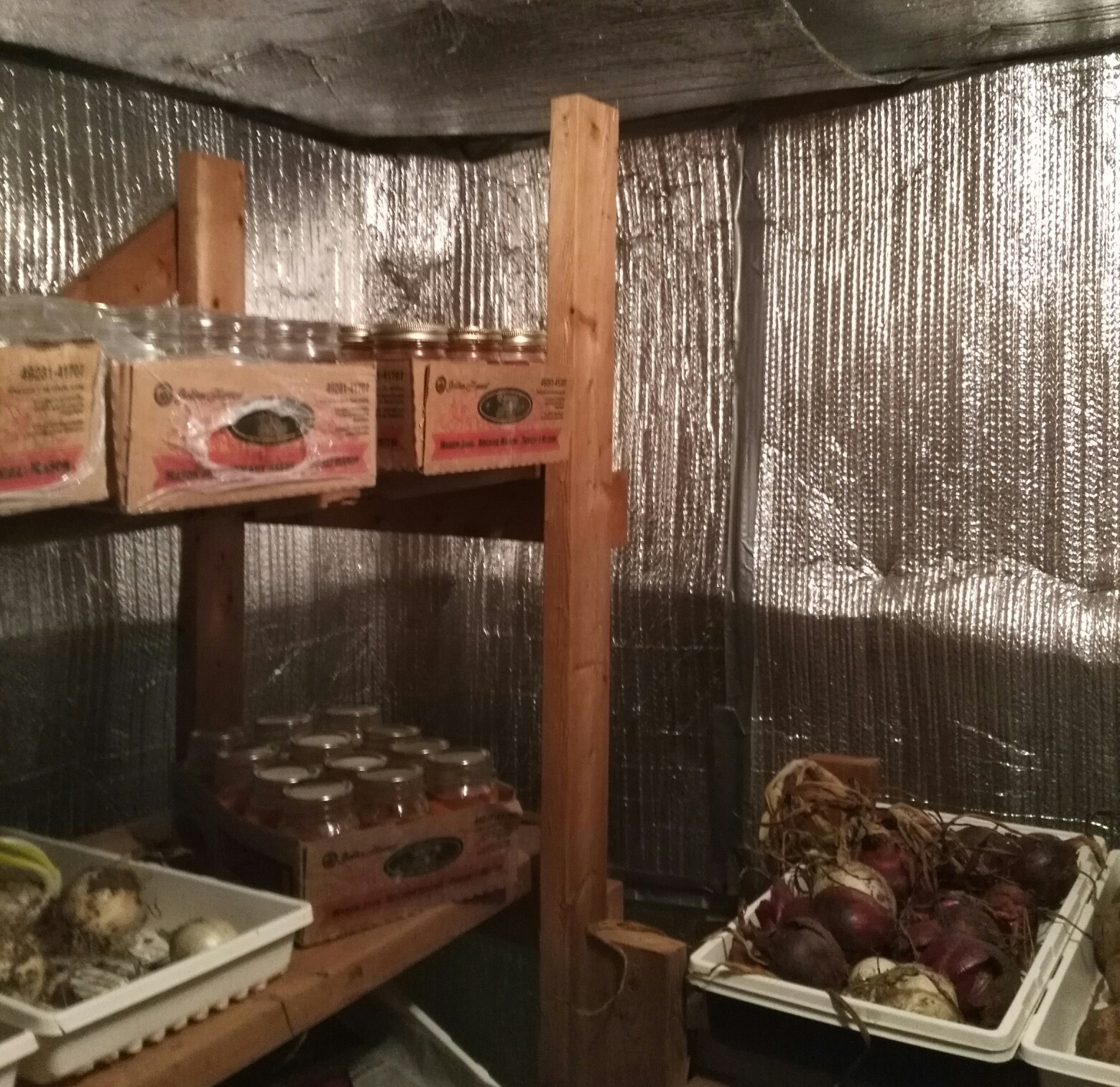 Our cold room keeps potatoes, onions, garlic, and carrots all winter. We also put our preserves on the upper shelves. Our cold room keeps potatoes, onions, garlic, and carrots all winter. We also put our preserves on the upper shelves.And a basement cold room or a root cellar captures 'free cold' in the same way a greenhouse captures free heat. This combination makes providing your own food 12 months a year a much more practical option.
With all that in place, here's how achieving 12 months of eating works at New Terra Farm.
Beet and turnip thinnings contribute to salads or braised greens. I also start cole crops in March that will be transplanted to the outdoor garden in mid-April, where they can survive late frosts under row cover.
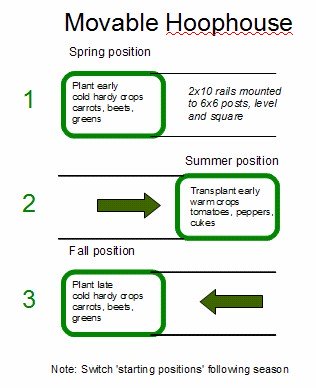 This is the planting pan for my hoop house on rails (the one I'm tilling in the picture) This is the planting pan for my hoop house on rails (the one I'm tilling in the picture)Harvesting from the outdoor gardens starts around end-May and continues through to October. The last plantings of storage crops from the outdoor garden are usually in July e.g. we plant potatoes for our winter supply around July 1. Obviously you want to delay the harvest as long as possible for your winter storage, without letting the crops get past peak maturity in the ground.
Once the tomatoes, peppers, and cukes are finished (end-September or so) we move the greenhouse back to protect the carrots, turnips, beets, broccoli and cabbage and greens in the 'fall position'. We add a layer of row cover as the weather gets colder. We can keep eating fresh from this store until at least Christmas.
A fellow grower lost out on $5,000 in her first season because of one simple mistake. Get your FREE Market Garden Starter Guide and avoid this costly error. New! The Bootstrap Survival Garden
In a protracted emergency, Job #1 is to feed yourself and your family. If you are able to grow a significant portion of your own food, you are that much more likely to survive and thrive. The Bootstrap Survival Garden book has complete instructions including photos and plans to grow your own Survival Garden. The 52-Week Harvest Plan lays out a complete system to plant, protect, and profit from your garden all year long. This season-based method adapts to your climate and with changing growing conditions, not against them. Or get both books as part of my Bootstrap Book Big Bundle and save a bundle.
|
See something you like? Share!
Got a Great Tip (or a Question) About Survival Gardens?
Got some ideas, questions, suggestions, comments about raising food in a 'have-to' situation? Got an example of a great survival garden, maybe with pictures? Share it here.
Recent Articles
-
Farm grown reviews of products recommended by New Terra Farm
Dec 04, 25 06:26 AM
Find great farm and garden products in my farm grown reviews -
Best Chicken Coop and Accessories for Small Farms and Homesteads
Nov 30, 25 09:18 AM
Looking for the best chicken coop? Here are the top coops, accessories, nest boxes, and gear to build a safe, productive poultry setup. -
Community Supported Agriculture Marketing Ideas To Sell Out The Season
Nov 05, 25 05:18 AM
Authentic Community Supported Agriculture marketing ideas to grow loyalty, boost sign-ups, and sell out your CSA every year
